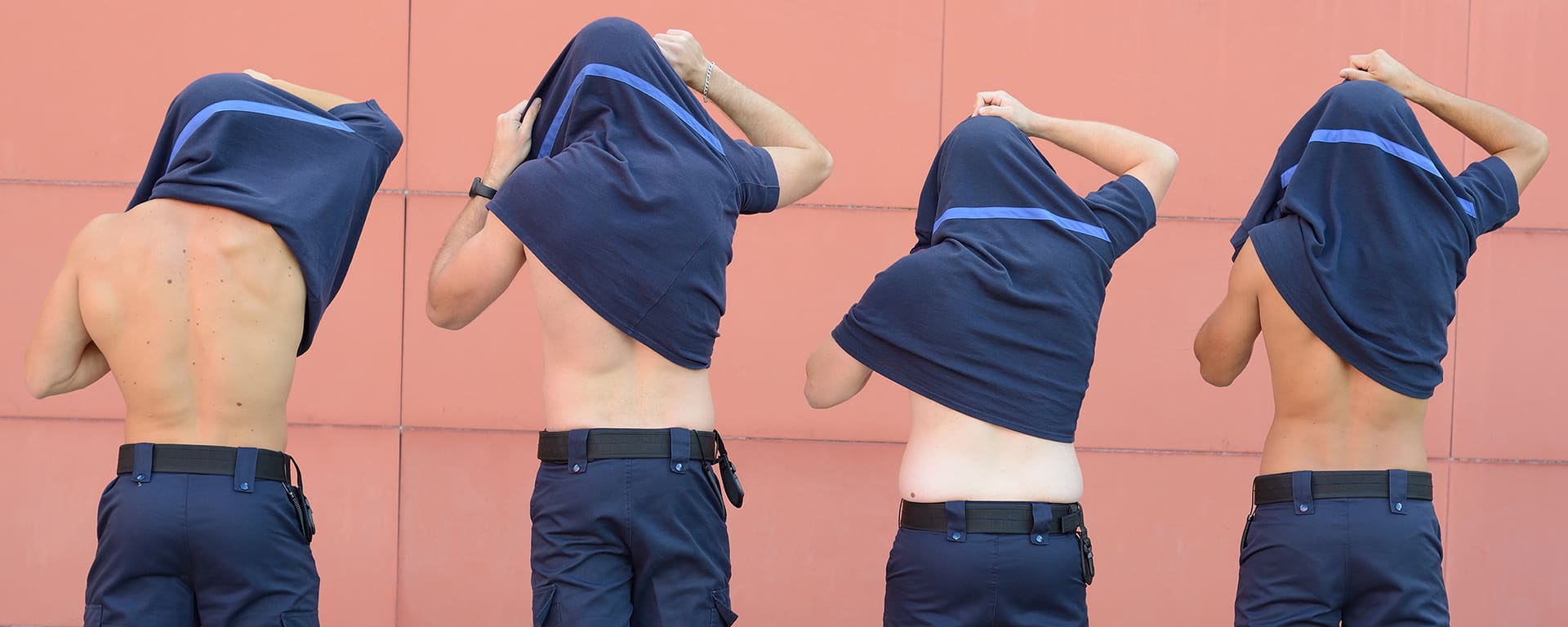
Vanessa Bareck, novembre 2014, Lyons Corbas, de la série Détenues © Bettina Rheims
Located on the former site of a tobacco and match factory, the “Friche” is far from the picturesque streets of the famed Panier neighborhood and the azure reflections of the stunning coastal road known as the Corniche Kennedy, both of which make up the charm of this port city founded by the Ancient Greeks. It is here, above the city, that the Friche, a large “art and cultural factory,” has taken over one of Marseille’s poorest districts: the Belle de Mai, a former working-class district long populated by Italian immigrants.
Over a surface area covering 45,000 sq. meters, La Friche has set up a skate park, a basketball court, a bookstore, a café, screening rooms, exhibition spaces, a community garden and a nursery. In other words, the “wasteland” (the meaning of the French word “friche”) has become a key destination for all Marseille residents and attracts countless of them to the activities it generates year-round. Over time, this space where people come together and interact has changed the habits of a marginalized population and brought art and cultural activities into their lives. To explore the prison world with this audience is to show them that art has its place anywhere, that it can emerge in all circumstances, and, most important, that it can also function as an escape, as a window to freedom.

La coursive aux dragons, de la série Un oeil sur le dos © Arnaud Théval
On the other side
Caroline Caccavale’s video, which was shot at night in the prison of Baumettes, sets the tone: “Mirror Prison” invites us to cross over to the other side of the tall, intimidating walls that separate, they say, the “good” from the “bad.” But what exactly is there to see behind the gates and the barbed wire? Prison guards supervising inmates who have learned to live away from the gaze of the outside world but under the ever-present eyes of the prison staff. For indeed, “in prison, the art of seeing is also the art of being seen,” as one can read on a panel at the entrance to the exhibit.
There is a door on either side of the video. If you go left, you find yourself behind bars with Bettina Rheims. Going right means going to the “good” side of the peephole with Arnaud Théval. Two different paths, two journeys in life that intersect and gaze at each other.
Hidden faces
A stocky, bare-chested man with a shaved head sports a large dragon tattoo that almost covers his entire back. Contrary to what one might expect, this man is not an inmate but a prison guard. With his series A glance at the back, photographer Arnaud Théval has chosen to challenge preconceived notions and to portray the daily life of prison staff, from their training to the work they do within the penal system.

Sans titre (Le tigre et le papillon), de la série Un oeil sur le dos © Arnaud Théval
Using a mix of photographs and testimonies, he reveals just how challenging and ambiguous their duties are. Monitoring, inspecting, punishing: the tasks they perform on a daily basis are often tinged with mixed feelings of pride and shame. Their desire to serve their country is frequently marred by the violence they experience on a daily basis: the violence between inmates, the violence generated by incarceration, and the violence that they, the authority figures, are often victim of.
The difficulty of their work sometimes leads them to push past their personal principles, their common sense, and themselves. This ambiguity is deftly captured in the images of Arnaud Théval, who highlights the power of the uniform—the one that makes it possible to differentiate the man from the job—and the bodies that wear it, whose many tattoos reveal who they really are deep down. “To see everything without revealing anything about yourself” is the dilemma faced by prison guards.

Niniovitch II, novembre 2014, Roanne, de la série Détenues © Bettina Rheims
Face to face
Next to twenty-something Léa, a little brunette in a blue dress, is fifty-something Brigitte, with short hair and a steady gaze. And next to Brigitte, there’s Samia, Virginie, Anita, Claudine and many others. All of them are women, all of them are in prison, and all of them spent a day in the fall of 2013 in front of the lens of photographer Bettina Rheims.
It was at the request of former French Minister Robert Badinter and with the support of the prison administration that the photographer managed to complete this uniquely powerful project in less than two months: to shoot portraits of anonymous female inmates.

Vaiata, novembre 2014, Rennes, de la série Détenues © Bettina Rheims
In this regard, what exactly does a prisoner, an inmate, a felon, a jailbird, a delinquent, a criminal look like? This is the very question posed by Bettina Rheims’ work and, looking at these 50 some portraits, the answer is disconcertingly obvious: they look like us, like you, like your neighbor, your mother, your sister, your grandmother. They look like all those women who share our daily lives, be it from near or far. “A female inmate is a woman, not an inmate. She looks just like any other woman,” writes art historian Nadeije Laneyrie-Dagen in a preface to the book that accompanies this series.
By photographing each woman in the exact same way, facing the camera and against a white background, the artist manages to reveal their uniqueness, their fears and their hopes—all the emotions too often erased by the prison world and communal living. All the emotions that a woman experiences in life, regardless of who that woman might be.

Le mur rouge, de la série Un oeil sur le dos © Arnaud Théval
By Coline Olsina
Prison miroir,
October 26, 2019 – February 23, 2020
La Friche la Belle de Mai, 41 Rue Jobin, 13003 Marseille


